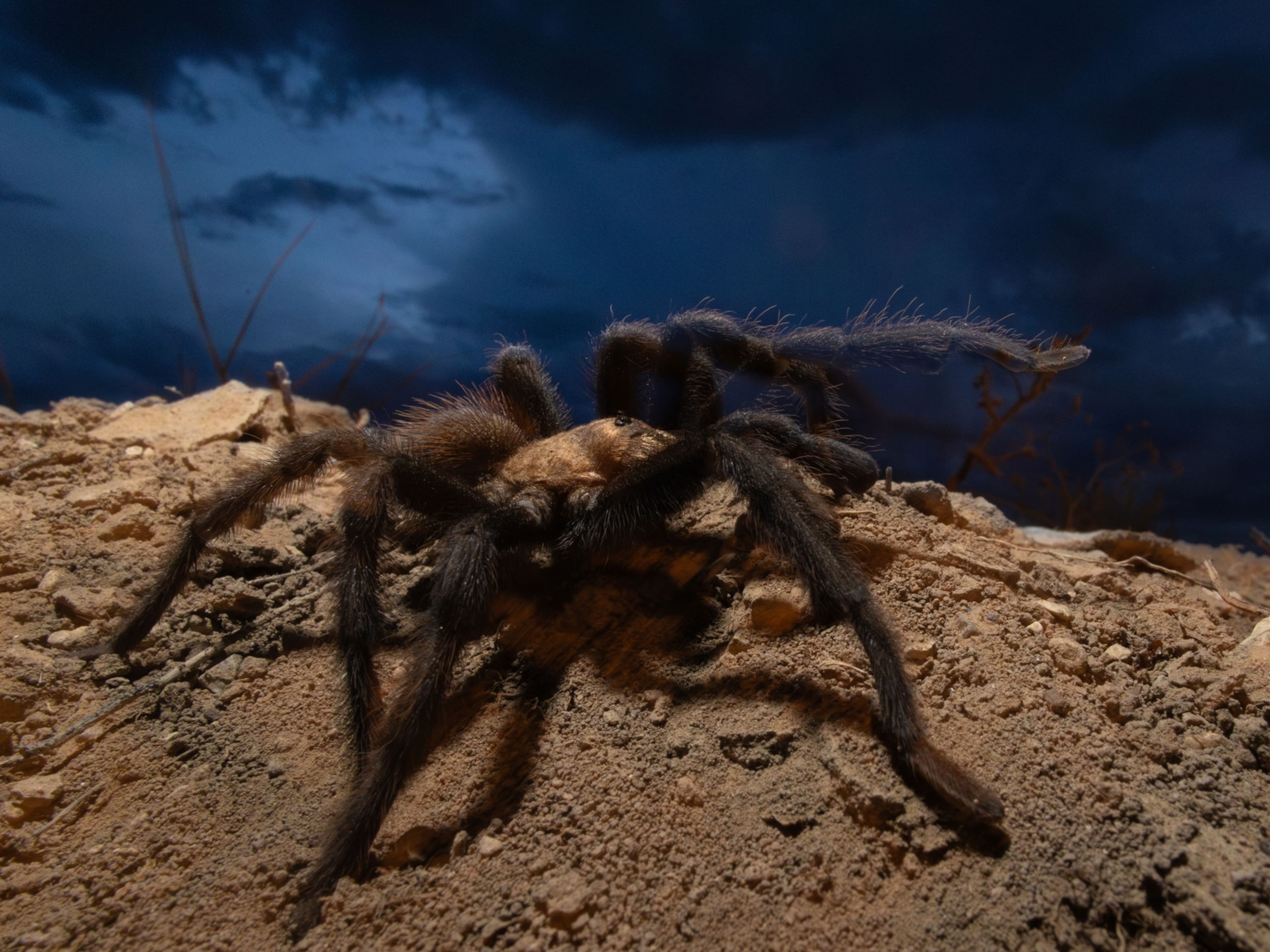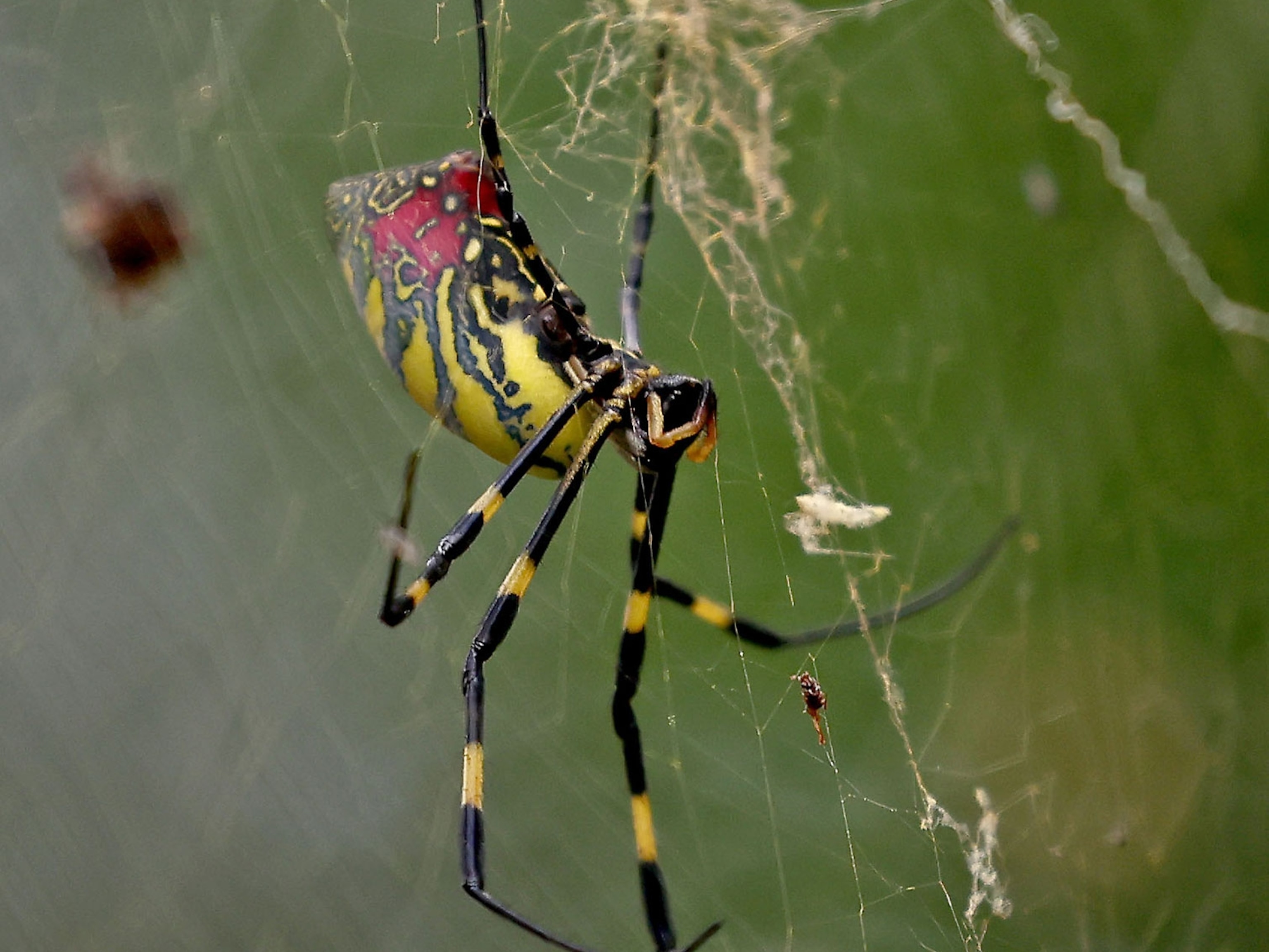Watch Spider Jaws Move as Quickly as World's Fastest Runner
New video solves the mystery of how a tiny arachnid can generate such tremendous force.
To Hannah Wood’s naked eye, it looked like the tiny spider in the pile of dead leaves in Chile wasn't doing much of anything.
Wood, then a graduate student at the University of California, Berkeley, was in South America to study trap-jaw spiders, so named for their habit of sneaking up behind prey and rapidly snapping their mandibles shut.
Yet at just a fraction of an inch long, the spiders themselves are hard to see, not to mention their jaws. (See "Small Spiders Have Big Brains That Spill Into Their Legs.")
So Wood returned to the forest, took some spiders back to her lab in California, and recorded them with a high-speed video camera that records up to 40,000 frames per second.
Playing her recordings back in super slow motion showed the secret to the spiders’ success: A rubber-band like movement that enables their jaws to move almost as fast as Usain Bolt, the world's fastest runner.
“You can easily see the blink of an eye when you record at 1,000 frames per second. To capture the trap-jaw movement, we had to go as high as 40,000 frames per second. It was amazing," says Wood, whose study was published April 7 in Current Biology.
Spider Science
Native to New Zealand and southern South America, trap-jaw spiders live in leaf litter, where they stalk other bugs. (See "Jumping Spiders Can Think Ahead, Plan Detours.")
In her travels, Wood captured individuals from 14 different species of trap-jaw spiders.
After placing the spiders in a glass tube, Wood—now an entomologist at Washington, D.C.'s National Museum of Natural History—built artificial prey using an eyelash attached to the head of a pin.

The researchers set up a high-speed video camera to record the spiders as they "hunted" Wood’s eyelash. By slowing the recording down more than a hundred times, Wood and colleagues observed how quickly the jaws rotated shut and how much force they generated.
Their results showed that spider jaws slammed shut in 0.00012 second, moving at about 20 miles (32 kilometers) an hour. The jaws' power was roughly 10,000 times that of an elite professional cyclist.
Snap Shut Case
This data helped answer the question of how can such tiny jaws—which don't have much muscle—can make such a strong movement.
Many animals compensate for puny muscles with speed, but muscles—even in the buffest bodybuilder—can only contract so fast.
So trap-jaw spiders, the study revealed, rely on something called power amplification. (Also see "Chameleon Tongues Among Fastest on Earth, Video Reveals.")
The spider opens its jaws slowly and then, when food is right in front of its mouth, it snaps shut almost instantaneously.
It’s the same thing that happens when you stretch a rubber band and then suddenly let go: The band slings forward much more quickly than you could stretch it yourself.
Other Trap-Jaws
The new research shows how important it is for scientists to get out in the field, notes Joseph Spagna, an entomologist at William Patterson University in New Jersey who was not involved in the study.
“If scientists had just studied preserved specimens in jars or museums, they never would have discovered how these jaws work. You have to get out in the field and actually watch what they do,” he says.
“It’s great work on a great group of spiders,” he adds.
Spiders aren't the only creatures that have evolved this trap-jaw mechanism, says Spagna—trap-jaw ants and springtails, a type of arthropod, both do. ("Watch Ants Use Giant Jaws to Catapult Out of Death Trap.")
Using power amplification, springtails can flip themselves 6 inches (15 centimeters) into the air, the equivalent of a human jumping to a height of 2.5 Eiffel Towers.
Now that's truly jaw-dropping.
Follow Carrie Arnold on Twitter.





